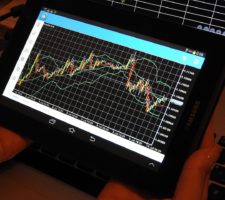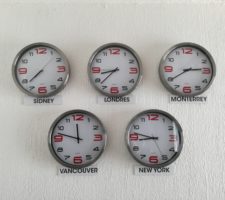When the term forex trading is mentioned, most beginners immediately picture the forex charts and candlestick patterns. Well, most traders rely on charts for making trades, but did you know that it is possible to trade without them? As a beginner, you might need charts to look at the patterns before making any decision, but as time goes, you get to understand the technical aspect of trading and can make near-accurate predictions based on your understanding of the trade item and not the chart. Trading without charts is not easy but possible approach.
In this piece, we are going to look at the fundamentals of trading without charts to help you decide whether it is an approach that you might be keen on some time in your trading career.
Is Trading Without Charts Possible?

Absolutely! You might think of it as bringing a knife to a gunfight, but that is not the case.
Besides, it is not something that should be left to the trading gurus who have been at it for the longest time. Trading without charts simply entails making decisions based on different information.
Price charts are a great source of information, but they are not the only source. There are several possible approaches to trading without charts.
There are two main approaches to trading and analyzing. One is called technical analyses and price charts (and different indicators) are the base of it.
The second approach is called fundamental analysis. This approach almost does not need charts at all.
Let’s go and talk about two examples of specific strategies you can employ in trading. The price charts usage will be minimized in them.
Volume Profile
In most cases, trades on the stock market are made with the short-term view as traders try to speculate how an item will move in a short period.
The volume profile is approach when you are interested in the sum of all contracts traded at each price for the current trading session.
With the volume profile approach, traders look at the market differently as they are not focused on the price swings of the specific trade items. Instead, they look at the volumes traded at different price ranges and not the actual prices of the items.
Correlation Approach
Another way of trading without charts is by using different correlation factors. This requires some knowledge in the economies of the world and how they can affect certain trade items.
For instance, the relationship between commodity prices and currency rates (oil vs. EUR/USD).
Oil producer’s currencies will weaken with a fall in oil prices as their economies will suffer the most. Countries (and their currencies) dependent on the import of crude oil will gain significantly.
Is It Good for Day Trading or Long-Term Trading?
Trading without charts can work for both day traders and long-term traders. However, it is more suited to the long-term traders that focus on a significant change in the volume of a trade item or substantial economic change as opposed to the instantaneous change in the value of that item.
For day traders, the most critical information that guides their investments is how the various commodities change quickly. This way, they are better suited to using charts that allow them to see the multiple patterns and make predictions in a good time.
On the other side, long term traders are keener on economic factors and changes in trends that might span for over months or weeks. It makes sense for them to dig into certain economic factors that affect trades such as oil, gold, and recession, among others.
Looking at some of the examples mentioned above, a steady rise in the oil price might affect the Dollar, but this won’t happen in a matter of hours. The change is sustained, and here is where long term traders have a field day as they can accurately make their trades and wait to gain profits after some time.
What Are The Good and Bad of Trading without Charts?
Let’s face it, charts are a crucial part of trading, and most people will find it challenging to do it without them.
These charts are easy to read and relate to something that makes it easy for traders to use them for their trading decisions. Here, a trader takes a fresh and direct approach that allows them to view the trade items they are interested in before making the required trade decisions.
Charts have fewer filters that allow a trader to quickly view the information they are looking for and make a decision. Here, you won’t be distracted by the information you do not need, which makes the decision-making process easier and more efficient. This applies to day traders.
However, charts are not always the best as they have their pitfalls, and some of them are closely tied to their advantages.
For instance, the clean and minimal chart with less information might be the best for a veteran, but be a problem for a novice who might need more information to convince them to join or exit the market.
On the other hand, quick decision making is not a prerequisite for succeeding in the forex trading niche. Most of the successful trading methodologies do not rely on fast decision making but on better analysis that covers more extended time frames.
Charts or No Charts?
It all goes down to what you need and how your trading strategy is carved out. For day traders who are more short term, charts are a huge asset, but for the long-term investors, they might not be keen on using charts.
You can be successful in trading without as long as it is aligned with your investment strategy.


